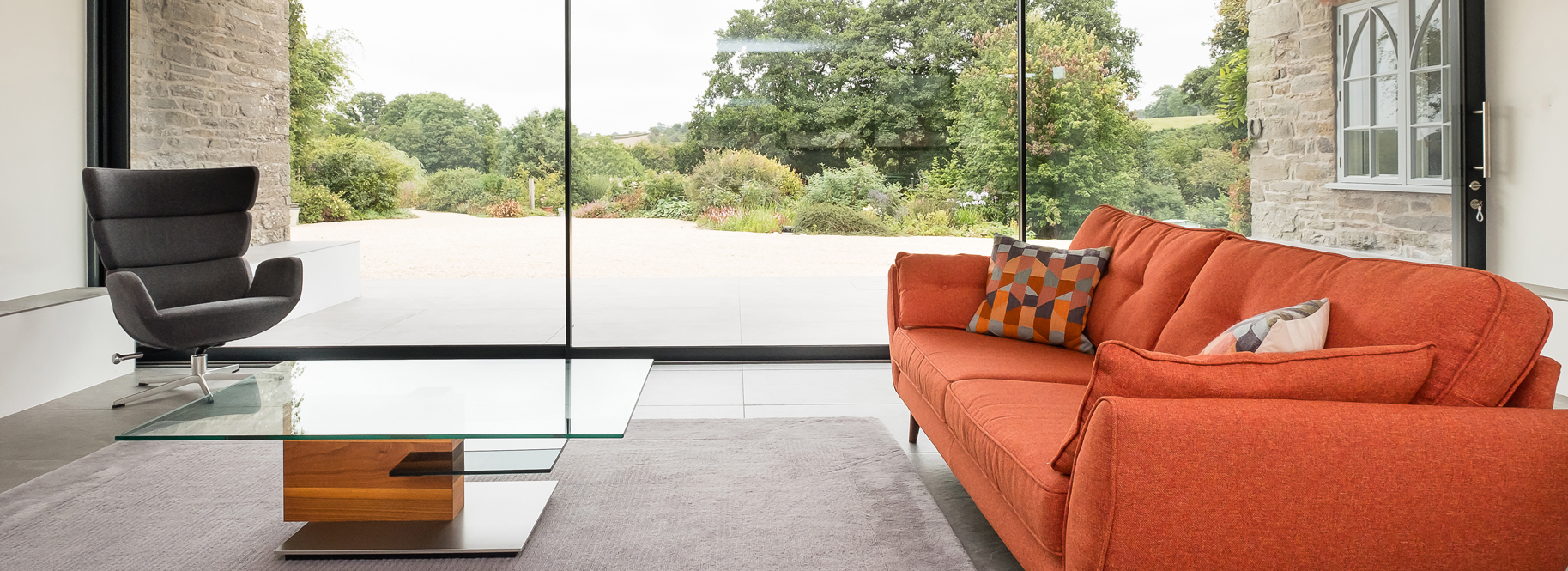The most recent updates to Building Regulations in England & Wales were announced in December 2021. Those updates came into force in June 2022, although the 12 month leeway for projects already underway means that they are only now starting to impact new projects.
Approved Document F : Ventilation
Approved Document L – Conservation of Fuel and Power
Approved Document O – Mitigating Overheating
To cover the changes and what it means for architects, builders and homeowners selecting glazed doors for their projects we have written three blogs, each covering the relevant Approved Document in detail.
Approved Document L – Conservation of fuel and power
>> Download Building Regulations Approved Document L
The headline figure for self-builders is that newly constructed homes must reduce carbon emissions by at least 31% with the expectation that further reductions will be implemented as the government introduces the Future Homes Standard and Future Buildings Standard – currently planned for 2025.
Domestic energy usage in the UK
Figures from the Department for Business, Energy & Industrial Strategy suggest that domestic heating and power consumption accounts for around 40% off all energy use in the UK and whilst improving the performance of newly built houses will have an impact, it seems clear that this alone won’t help the UK reach its zero carbon goal.
The most talked about element of the revised Building Regulations is the enhanced energy efficiency standards required under Part L1A (predominantly residential new-builds) and Part L1B (predominantly extensions and renovations to existing homes).
Glazing specification to meet Approved Document L
With glazing in mind, there has been a reduction in the U-values required for doors, down from 1.8 W/m²K to 1.4 W/m²K on extension and renovation projects. For new-build homes the Part L1A offers slightly more flexibility as the doors are included as part of an overall building calculation, so whilst a nominal figure of 1.2 W/m²K is included within Approved Document L, doors can achieve 1.4 W/m²K if additional thermal efficiency measures are taken elsewhere on the project.
One key element to glazed door design that has changed in recent years is how the overall U-value of a system is calculated. Previously only the visible elements of the frame were included within the calculation so if you recessed the outer frames into the walls you were able to claim an improved thermal performance. That is now no longer acceptable; the entire frame of the system has to be included which has caused some products on the market significant issues because, typically, the outer frame of the system has been the least thermally efficient element of the whole door system.
How IDSystems doors perform
From an IDSystems perspective this hasn’t impacted the performance of our doors, we have always calculated the true U-value of the system so the figures you see for our aluminium sliding doors, bifold doors and slide & turn doors already include the outer frames in those performance standards.
It is also worth noting that some inferior glazed door systems that have poor thermal performance are using Door Energy Ratings (DER) as a method to comply. This allows the solar gain through the door to compensate for the heat loss through the door, however with the restrictions on the amount of solar gain allowed under Approved Document O, this is unlikely to be a suitable option for most projects.
Future homes standards
Whilst the thermal efficiency performance standards have increased with the latest change to Building Regulations, the performance figures that are likely to be required to meet the Future Homes Standards in 2025 will be even tighter. For systems like the SUNFLEX SF75eco bifold doors this isn’t an issue because it already can achieve Passivhaus standards of performance – with U-values from just 0.8 W/m²K.


